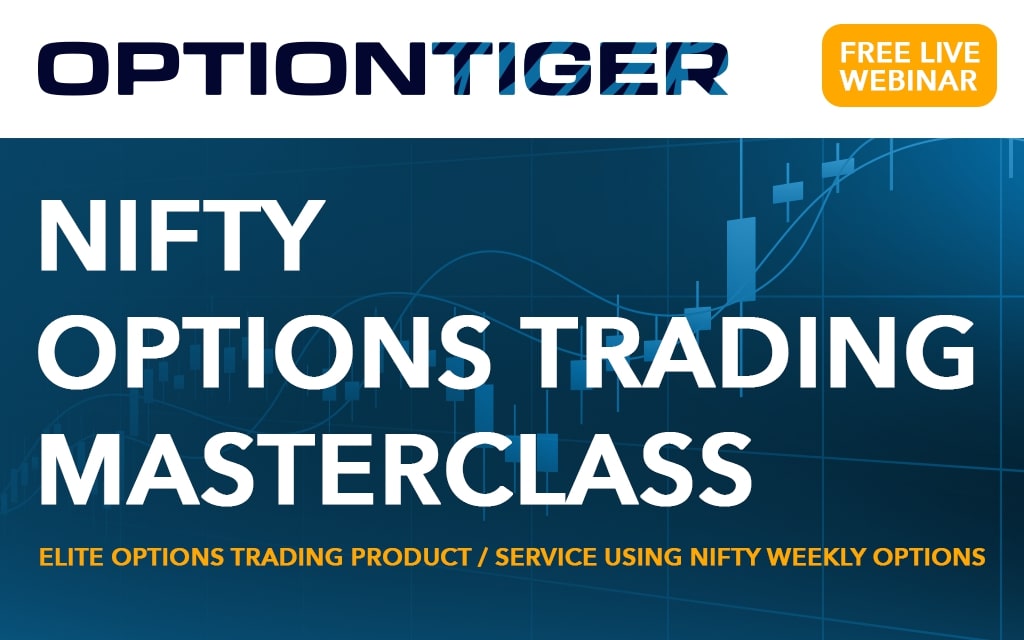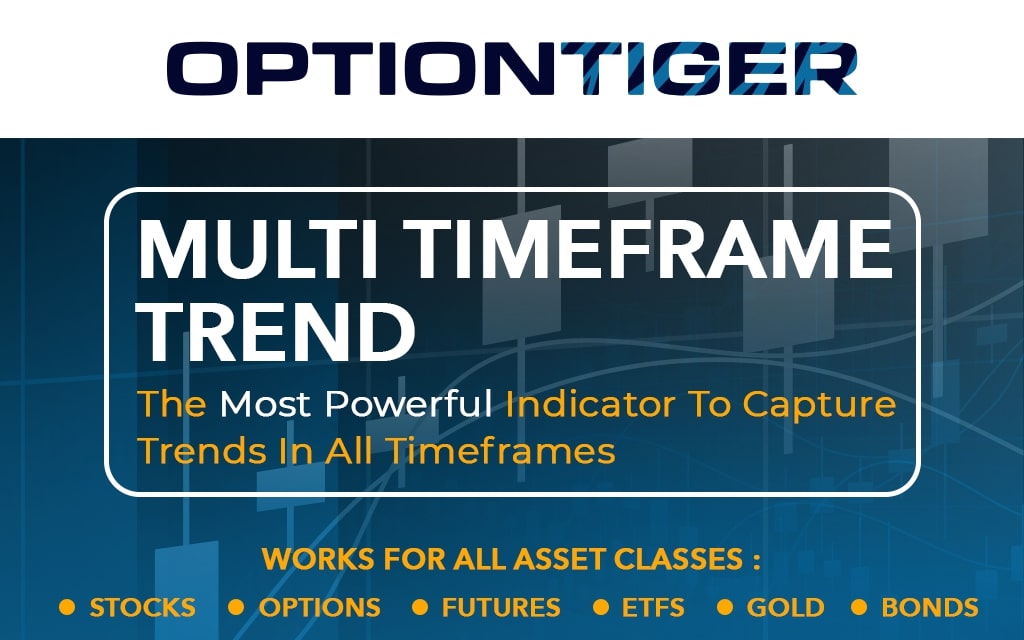Options Advanced Module
Get the latest strategies and methods that the professionals use, every single day. Go pro with your trading
ABOUT THIS COURSE
The Options Advanced Bundle is a collection of Advanced Option strategies like Iron Condors, Butterfly spreads, Calendar spreads, Back spreads, Straddles and Strangles and much more. These Advanced Options strategies use Single Options as well as Options spreads as components, so it is important to understand the Beginners and Intermediate modules thoroughly.
All Advanced Options strategies uses multi-leg Options, and various spreads are combined in various ways to create these Advanced Options strategies. Most of the Advanced options strategies covered in this module have live trade examples. These advanced options strategies may require complex adjustment techniques, including guerrilla tactics which are covered. Additionally, Futures and Options on Futures are included as a complement the Advanced Options strategies for portfolio protection and advanced hedging techniques.
- Guerrilla Tactics are for Advanced traders only
- Why are Calendars Unique to Options?
- Popular Adjustments for Calendars
- How to Construct an Iron Condor
- Choosing the right Strike Prices for Iron Condors
- High Reward to Risk possible in Diagonals
- Vega Positive and Theta Positive Strategies
Courses in this Module
Calendars Spreads are popular trades and come under the category of Time spreads. In a Calendar spread, we sell the front month Option series and buy the back month Option. The Calendar is generally constructed at the money, however, you can create bullish or bearish variations. It starts out as a delta neutral but can quickly move into a biased position. The Calendar is also one of the few strategies that is a Theta positive and a Vega positive trade. Because it is Vega positive, your Calendar will do better if Volatility increases after you put the trade on. The primary method of profit in Calendar Spread Strategy is to take advantage of a higher level of time decay in the front month. We put a Calendar trade on the GLD, and this quickly turns into a Double Calendar when price moves too much in one direction. In fact, this trade is an absolute roller-coaster and you will learn a very valuable lesson – Don’t give up on your losers. If you simply close your losers and move on to the next trade, you will make the same mistakes and lose again.
Course Overview
- Why are Calendars unique in Options
- Why are Time spreads difficult to adjust
- Popular adjustments for Calendars
- Dealing with a trade in trouble. Live trade
In this course you’ll learn non-traditional techniques to manage Options positions, including the more complex strategies. These techniques are called Guerrilla, as they are Bold and may not work every time. But when they do, it will provide a significant boost to your trades. The reason you’d decide to deploy these techniques is because as an advanced trader, you know how to break away from standard strategies to Thinking Out of the Box, and can manage the consequences.
Course Overview
- Guerrilla Tactics are for Advanced traders only
- May not work at all times but can be rewarding
- Be prepared with backup plan if it doesn’t work
- Think out of the Box for all positions
The Iron Condor Spread is one of the most popular trades of all Options trades, and it is the undisputed “King of Time Decay or Income strategies". It is special because you get to double the premium collected, reduce your risk levels as compared to normal credit spreads, double the amount of time decay, and maintain a delta neutral position, at least when the trade is first put on. The negative with the strategy is that it’s a heavily Vega negative position. We dissect the Iron Condor in this trade, put on a real trade on AAPL, and take it through a couple of weeks. We analyze the risks, set adjustment points, and discuss suitable adjustment strategies for different market situations as the trade develops.
Course Overview
- How to construct an Iron Condor
- Double Premium and Half the risk features
- Choosing the right strike prices for Iron Condors
- Adjustments for an Iron Condor
If you’re a Stock trader or Long term stock investor, and hold stocks in your portfolio, whether it be medium term, or long term, you may often wonder how to add performance to your Stock portfolio. You depend on Growth from the value of the stock rising, and perhaps you may be receiving a Dividend from these Stocks, however this basket of stocks providing a consistent Dividend has dwindled down. So then most Stock investors simply wait for their Stocks to increase in value.
In this course, you’ll learn to add a Very Powerful dimension to Stock portfolios. The Covered Call is often the most used strategy even by professional money managers. It’s a simple way to add about 1% to 2% to your Stock Portfolio on a repeatable basis. You can repeat it every week, 2 weeks, a monthly cycle or a quarterly cycle or more. It all depends on personal considerations of Time, and availability to look at Markets during market hours. All of this is explained in detail in this course, with 3 Live Trades demonstrating 3 different Types of Covered Calls, and provides a complete range of possibilities, with the trade management that goes on for about 2 weeks.
Course Overview
- Powerful booster strategy for Stock traders
- Live trades on all 3 types of Covered Calls
- Demonstration of ITM, OTM and ATM Options
- Can be repeated consistently through time
Back Spread and Ratio Spreads involve putting on an unbalanced amount of Long and Short Options. If we have more Long Options than Short, the position is called a Back Spread and if we have more Short Options than Long, the position is called a Ratio Spread. In a Ratio spread, you have unlimited losses on one side because you have more Short Options. The Back Spread is part of the BUSY PROFESSIONAL SERIES can be constructed in many creative ways, and we show you how you can manage different strike prices as well as different ratios of Long and Short Options to construct an optimal Back Option Spreads. We don’t recommend Ratio spreads as they have an unlimited loss potential.
Course Overview
- Philosophy of Back and Ratio spreads
- Understanding the “Vally of Death" and avoiding it
- Greeks in a back Spread
- Why this is a Volatility strategy
Diagonals and Double Diagonals are some of the most under-rated Advanced strategies. They are Time spreads or Horizontal Spreads, and positions have different expiry series. Diagonals and Doubles are also Theta positive and Vega positive, just like Calendars and Double Calendars. Diagonals have the ability to create situations with a very High Reward to Risk ratio, even as much as 5 to 1 in specific circumstances. Mastering these strategies is a MUST for all Option traders.
Course Overview
- High Reward to Risk possible with Diagonals
- Trades can achieve significant Edge
- Vega Positive and Theta positive strategies
- Managing adjustments is the Key
Straddles and Strangles are also Volatility strategies and are very popular strategies. Both these strategies are non-directional, so its possible to profit from a movement in either direction. But the move must come fairly quickly, because we have two Long Options (one on the Call side and one on the Put side), and so our time decay exposure is doubled. Additionally, Vega exposure can be quite large, so this is something to watch for. In general, its best to put on Straddles and Strangles in times of low volatility as measured by the individual Implied Volatility of the stock itself as well as observing the level of the VIX Index. We also look at the “Valley of Death" where the trade can fall into trouble.
Course Overview
- Why Straddles are Non-directional strategies
- Differences between a Straddle and a Strangle
- The Pluses and Minuses of these strategies
- Managing the Valley of Death in both strategies
Futures trading is a high-energy environment. Futures trade just like Stocks – they have unlimited profits as well as unlimited losses. And just like Stocks, they don’t have any Greeks other than Deltas (Did you know Stocks had a Delta). Our Futures trading course explains why Futures is generally a more leveraged environment than Stocks, and also trade by Tick sizes and Tick values. We discuss Futures Trading in detail, and also put on a couple of Futures trades on the S&P E-mini Futures, trading under the symbol /ES in this Futures trading course. We look at Futures Trading activity around the world, the volumes and the 24-hour trading window. Futures trading is also very simple to get in and out of trades, so it’s popular with day traders.
Course Overview
- The high Leverage in Futures
- Unique nature of Futures
- Future is good for Day Trading
- Live trades on ES S&P 500 Mini Futures
Futures can play an important role in an Options investment context, because they can be great hedging instruments to an existing portfolio. This course introduces a new type of instrument – Options on Futures. An Option on a Future means that the underlying asset is the Future itself. This is bound to sound complicated, but its explained in detail. In general, unless you’re a Futures trader, you would not trade these instruments. However, what both these products offer is a 24-hour trading window. Therefore, if you had a normal portfolio comprised of Stocks and Options, and were concerned of some crisis brewing in overnight markets, its possible to hedge your portfolio in the middle of the night. This course shows how to do this using both these instruments.
Course Overview
- How Options on Futures are different from Options
- Options on Futures as a Hedging technique
- Can protect moves when markets are closed
- Size differences of ES Futures and SPX Options
This Advanced Iron Condor strategy is designed to be a continuous rolling trade, preferably on an Index like SPX or Index ETF like the SPY. By combining many Condors in different expiries that are layered as the stock price moves, its possible to make the risks of Iron Condors a lot more forgiving, while maintaining its time decay features that produce income and its delta neutral characteristics.
Course Overview
- A continuous rolling trade technique
- More protection than a regular Iron Condor
- Consistent monthly income strategy
- Position sizing and wide strike coverage
The Butterfly Option Spread has limited attractive features, but it’s a very flexible strategy. Learn Exotic Butterflies, by extending its basic features and adding completely innovative characteristics to the Base Case. This is an Advanced adaptation of the Basic Vanilla Butterfly spread, which includes a Live Trade on Priceline (PCLN). It also includes a full demonstration of how a trader can alter the Base case in many ways, and make it suitable for a variety of situations. Ultimately, this is an Income strategy, based on Time Decay, and how this can be fully exploited with the Exotic varieties.
Course Overview
- High Reward Options strategy
- Highly flexible trade structures
- Relatively Low Risk (fixed risk) trade
- Can be a consistent income strategy
Should we call this trade Priceline Earnings Explosion or Volatility Implosion. Splice and dice it any way you want, there is no doubt this trade is on Steroids. The trade takes advantage of a very specific Volatility Arbitrage situation noticed in Priceline on the day it was reporting earnings. This was a case of mispricing Implied Volatility on the next Option series. A fairly complex Short Straddle strategy, that worked like a gem. Only because the analysis leading up to the trade was Spot On the mark. Believe it or not, this sort of opportunities come up all the time during Earnings reports season. Once you learn this strategy and approach well, you can create very nice 1-day trades based on the Volatility Crush.
Course Overview
- Explosive Earnings report trade
- Very tight Risk Management principles
- Exploiting the High Volatility in a smart way
- Volatility Crush produces massive profits
Both Credit spreads are dissected to convey an advanced level of knowledge and skill in using these credit spreads. Everything on How to Trade Options from the ideal credit spread trade setup, trade management, adjustments and exit. You’re expected to know what a Bull Put and Bear call spread is. If you have a regular job, then you need Option Trading Strategies that allow you to focus on your job, but yet create a somewhat stable and reliable income stream from your investments. In this course, we dig deep into credit spreads and understand why being an Option seller (risk defined of course – no naked selling) may not be that bad after all. We analyze Probability, Time decay and Volatility considerations and come up with some pretty good stuff on How to Trade Options. Anyone wanting to create a consistent monthly income of 2% to 5% will use these strategies as part of their “Income" portion of their portfolio.
Course Overview
- Cutting edge trade entry and expiry analysis
- Selling the Optimal width credit spread
- Optimize Time decay, Probability and Premium
- Live trade examples with adjustments
Mini Courses
Mini-courses focus deep into a particular topic. Mini-courses are about 5 to 10 minutes long.
Many traders may not look at the Beta of a stock while choosing candidates for trading. But in most cases, two stocks with similar Betas is actually a disadvantage. This FREE course explains this concept.
BackTesting tools on ThinkorSwim are advanced. There are two ways to backtest your strategies, ThinkBack and Think OnDemand. This mini-course explains both of these tools
Non-directional trading, also known as Delta Neutral trading refers to Options strategies that can potentially benefit regardless of which direction the stock moves. Examples of Non-directional strategies are Straddles and Strangles, Calendars, and even Back spreads to some extent. Non-directional strategies generally depend upon Time decay for its income generation technique.
If an Options trader was looking to trade the SPX Options with some leverage, there are two instruments available for this purpose. This Free course covers the Pros and Cons of these instruments.
The Iron Condor is a very popular Options strategy, but it also has drawbacks. Very often Option traders find their Iron condors are in trouble, and get confused as to how to Adjust these situations. Because an Iron condor is a 4-legged strategy, it can be somewhat complex as well. This mini-course explores the various adjustment choices for the Iron Condor.
Rolling an Iron Condor can be complex as we deal with 2 trades, each having 4 Option legs. This FREE course explores the concept of Rolling an Iron Condor successfully.
Applicable to both Stocks and Options, Beta strategies and Hedging techniques can be a highly effective mechanism to protect individual Stocks, or an entire portfolio of mixed assets like Stocks, Options and Futures, in case there is concern of a correction in the overall markets due to macro factors. These techniques are demonstrated on a mixed asset portfolio hedged with SPY and QQQ Put Options.
There are many versions of Gamma Scalping. In this mini-course, we show an example of a Straddle trade being used for Gamma Scalping. In this case, once the stock moves significantly, various techniques can be deployed to bring it back to a Delta neutral position, while at the same time, booking profits. This is done in bits and pieces, and hence the term Scalping.
Non-directional trading, also known as Delta Neutral trading refers to Options strategies that can potentially benefit regardless of which direction the stock moves. Examples of Non-directional strategies are Straddles and Strangles, Calendars, and even Back spreads to some extent. Non-directional strategies generally depend upon Time decay for its income generation technique.
If an Options trader was looking to trade the SPX Options with some leverage, there are two instruments available for this purpose. This Free course covers the Pros and Cons of these instruments.
Join Our Community For Free
Option Tiger is dedicated to all things Options and Markets. Whether you’re a beginner or advanced, get the most sophisticated Options and Market content.





